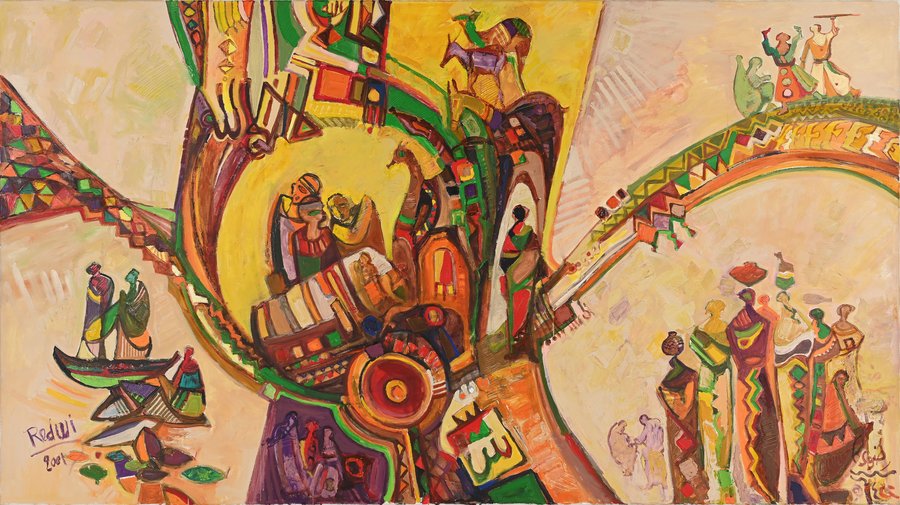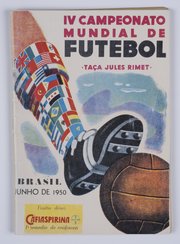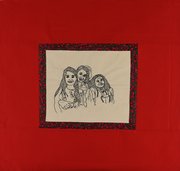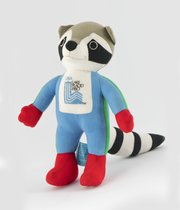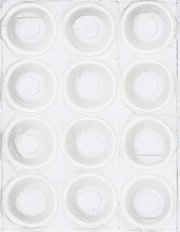
Qarawiyat (Village Scenes)
Mathaf: Arab Museum of Modern Art
- Title:
- Qarawiyat (Village Scenes)
- Artist:
- Abdulhalim Radwi
- Date:
- 2001
- Title:
- Qarawiyat (Village Scenes)
- Artist:
- Abdulhalim Radwi
- Date:
- 2001
- Material:
- Acrylic paint, Canvas
- Technique:
- Painting
- Dimensions:
- 169.5 × 301 × 4.5 cm
In this dynamic large-scale painting, Saudi artist Abdulhalim Radwi presents a visual narrative of everyday life in the Kingdom before the rapid modernisation that swept the Gulf region after the mid-20th century. He divides the canvas into fragments that revolve around a single central point. This method is often repeated in Radwi's work and reflects the artist's theoretical belief in a central cosmic energy that interacts with the emotional, intellectual and kinetic energies of the human being.
Here, Radwi's figures are theatrical and full of energy, performing various everyday activities in the old Saudi villages, such as scenes of sailing fishermen, a group of villagers carrying water vessels, figures engaged in warm conversation, and others celebrating with a traditional Hijazi (from the Hejaz region in Saudi Arabia) dance. The artist adds to this visual narrative animals used for transport, food and agriculture, emphasising the harmonious integration of different elements in this universe. Radwi's colour palette is clearly derived from the Saudi desert environment, and his abstract forms are inspired by traditional Saudi textiles.
Although the painting makes no reference to religious rituals, the artist has chosen to cap the painting with Arabic script that conveys the first pillar of the Islamic faith: “There is no god but Allah.” Radwi is also keen to introduce symbols of peace, such as birds overlapping within the segments and the Arabic letter 'seen', which the artist occasionally uses in his work to refer to both the Arabic word 'salam', meaning peace, and his homeland of Saudi Arabia, which also begins with the letter 'seen'.
